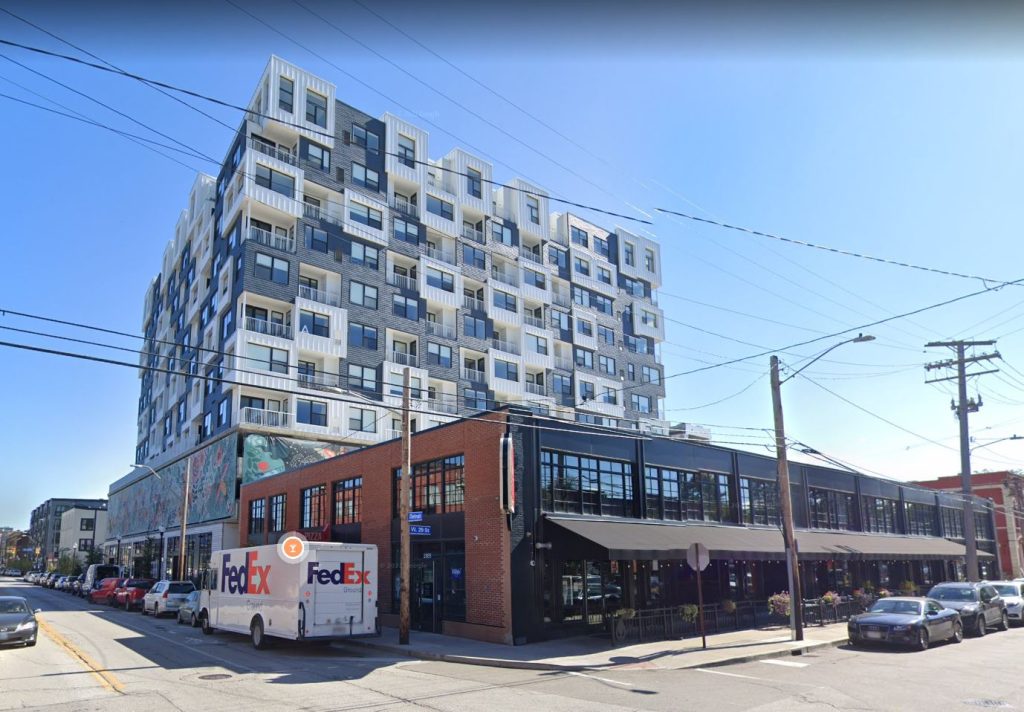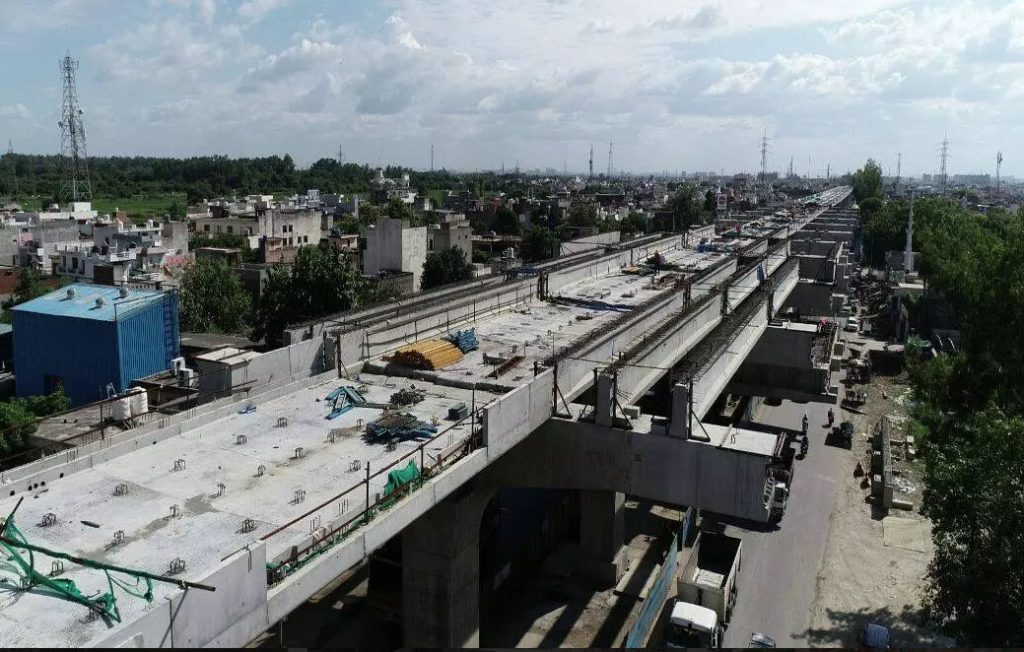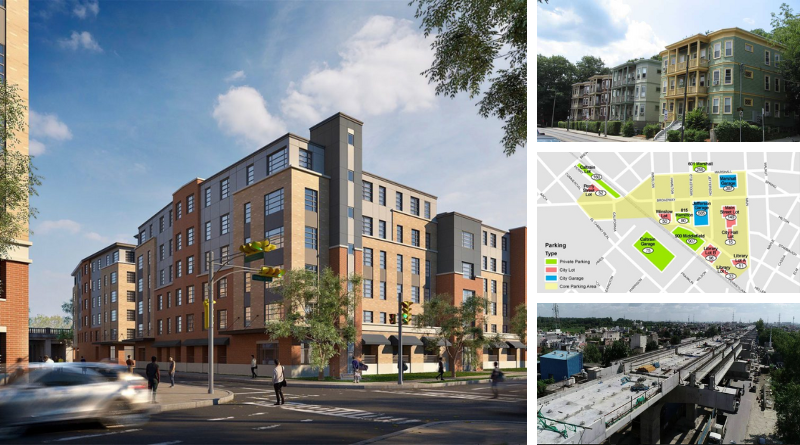New housing comes to Orange, NJ (left); MBTA Communities Law implementation (top right); Reducing parking minimum in California (middle right); Near Delhi, housing demand grows in anticipation of new rail service (bottom right)
Article of the Week

MASSACHUSETTS—What the MBTA Communities Law Means for Your Town
Amy Dain, Commonwealth Magazine, Jan 2, 2023
The work of implementing the 2021 MBTA Communities zoning law is now with the local communities who must determine if current zoning meets current requirements or amend their zoning accordingly. The measure supports the development of multifamily housing near stations outside of the City of Boston by requiring cities and towns served by the MBTA to zone a district “of reasonable size” for multifamily housing near stations to address housing shortages and traffic problems in the region, a situation exacerbated by decades of restrictive zoning and limited development. In August 2022, the Massachusetts Department of Housing and Community Development issued guidelines defining the land area and zoning capacity for each of the 175 transit-centered communities, and it released tools for measuring zoning capacity in November 2022. Note: This article is the first of a five-part series on the implementation of the Multi-Family Zoning Requirement for MBTA Communities.
NJ TOD News

BOUND BROOK—New Bound Brook Multifamily Property Sells for $22M
Jessica Perry, NJBIZ, Jan 4, 2023
A transit-oriented development project in Bound Brook completed in 2021 has been sold for $22 million. Mosaic on Main comprises 63 units and one retail space, and is located at 7-15 W Main Street, less than a quarter-mile from the Bound Brook Station. The Borough will also see additional multifamily housing at 100 Hamilton Street in The Rail, a 143-unit transit-oriented development currently under construction. Bound Brook was designated a New Jersey Transit Village in 2003. In 2016, the Army Corp of Engineers completed $143 million flood control project that addressed chronic flooding in the municipality.

ORANGE—Orange’s Main Street Revitalization Comes Together
Chris Fry, Jersey Digs, Jan 4, 2023
Orange has seen a notable amount of redevelopment since its City Council passed the Main Street Redevelopment and Rehabilitation Plan in 2020, the latest being APEX Orange Crossing. The first phase opened in August 2022 and comprises 50 units. Two additional phases will add 190 units. Other Orange projects include Linc32 and Linc52, which form a 5-story, 72-unit mixed-use complex constructed by L+M Development Partners, and Essex & Crane, a project currently under construction development by Russo Development. Over the next 12 to 18 months, Orange will see over 600 new apartments near its transit facilities. Orange was designated as a New Jersey Transit Village in 2009, and is served by NJ TRANSIT’s Gladstone Branch and Morristown Line and several bus routes.
Transit and Equity News

NEW JERSEY—‘Until It Affects You’: Wheelchair Users Still Battle to Make NJ More Accessible
Olivia Liu, Asbury Park Press, Jan 3, 2023
Though the Americans with Disabilities Act (ADA) passed more than 30 years ago, disability advocates still fight for equal access. The ADA mandated access to public transportation, and to things such as handicapped parking spaces, wheelchair-accessible bathrooms, and level or ramped access to buildings. Despite decades of efforts, many places remain stubbornly inaccessible and services remain less accommodating for disabled people. Advocates today use a variety of tactics to gain better access.
CALIFORNIA—Oakland Plans to Build 36,000 New Homes in Decade
Jack Rogers, Globe Street, Jan 3, 2023
By the end of January, all cities in the Bay Area must get state approval of individual housing plans or become ineligible for grant funding and face several other penalties, including the possibility of losing local control over approving new homes. To meet the requirement, Oakland must gain more than 26,000 new housing units at all income levels between 2023 and 2031, a 78 percent increase from the last eight-year housing goal set by the state. Oakland’s new housing plan designates 600 sites for new housing. Most of the new housing will be concentrated in downtown and West Oakland. Plans include transit-oriented housing development along Foothill and MacArthur boulevards, and seek to increase affordable housing in “high-resource,” i.e., wealthier neighborhoods.
Regional and National TOD News

OHIO—New Data Supports ‘Back-To-The-Future’ Project to Rezone Cleveland, Cuyahoga County, for Transit-Oriented Development
Steven Litt, Cleveland.com, Jan 4, 2023
Research undertaken by the Cuyahoga County Planning Commission (CCPC) with the City of Cleveland and the Greater Cleveland Regional Transit Authority finds demand for transit oriented development (TOD) rising in and around Cleveland, particularly among young people. The study found that between 2012 and 2021, Cuyahoga County gained nearly $3 billion in real estate value through new construction or building renovations in 22 transit corridors. The research is part of the County’s effort to document the state of TOD in the region, which serves as the first step in its TOD Zoning Study. The County will use these findings in conjunction with an analysis of existing TOD zoning, development of model TOD zoning, and identification of TOD financing strategies.

CALIFORNIA—A new state law seeks to reduce parking minimums in high-transit areas. Redwood City is already on its way
Leah Worthington, RWC Pulse, Dec 30, 2022
Efforts undertaken by Redwood City in the Bay Area aimed to reduce car dependency by cutting down and then ending parking minimums, activities that anticipated Assembly Bill 2097. The bill, which became effective January 1st, bans parking minimums within a half-mile of public transit. To this end, the City has converted several existing lots to green space, and more recently codified in its Transportation Demand Management program such that new residential and commercial developments must plan to reduce the need for on-site parking and vehicle congestion. The City aims to have more than half of all trips taken by means other than driving by 2040.
International TOD News

INDIA—Delhi-Ghaziabad-Meerut RRTS Corridor Set to Change Real Estate Dynamics Along the Corridor
Ashish Mishra, MoneyControl, Jan 3, 2023
The National Capital Region Transport Corporation (NCRTC) is implementing India’s first 82-km Delhi-Ghaziabad-Meerut RRTS corridor, a semi-high-speed rail-based transit network. When completed in 2025, the RRTS will comprise 25 stations including two depot stations. The 82-km trip between Delhi and Meerut will take about 55 minutes, leading some professionals working in Delhi to seek housing options in Delhi’s satellite communities that will be served by the new service. Real estate professionals observed that land prices have risen between 35 and 40 percent in the last two years in areas along the RRTS corridor, from Rs 12,000-15,000 to Rs 18,000-20,000 per square yards. The 17-km section between Sahibabad and Duhai is due to open by March 2023.

